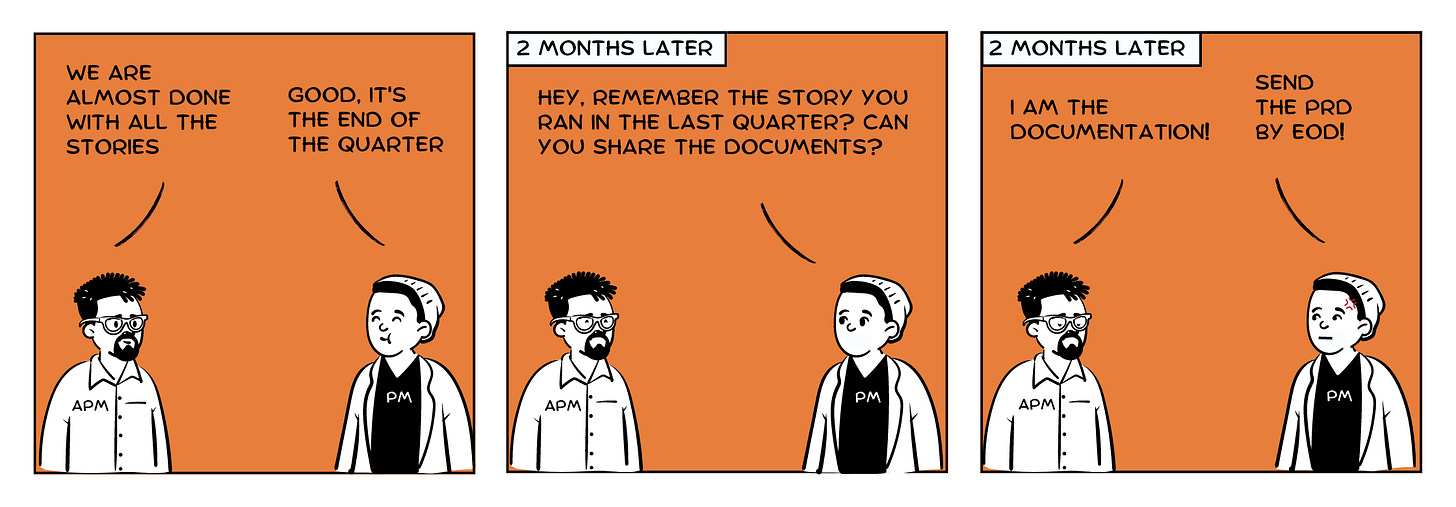Case Study Updates -
We're excited to share with you the latest updates on our platform! We've added 10 new case studies that provide an in-depth look at successful products and features in various industries. Here are some of our newest additions:
Microsoft Outlook's Notification System
Writing a Review on Myntra
Recommendations feature of Spotify
StepSetGo's Notification System
Transferring money to a peer on Airtel Thanks Pay
Improve LinkedIn Messaging
How will you retain users of Disney+ Hotstar whose age is above 55 years old?
Launching Marketplace for Console and PC Games for Mobile Premier League (MPL)
New User Onboarding feature of BeReal
Transferring money to a peer on CRED
To view these case studies, simply click here. We hope you find these case studies informative and inspiring as you work towards creating successful products and features in your own industry.
How Substack sparked its early community of writers?
Substack is a community-driven platform that has grown rapidly in just three years. While they have achieved significant success with over 250,000 paying readers, what sets Substack apart is their ability to build and scale a vibrant community.
How Substack works
Substack was created to help writers earn a living directly from their readers. By enabling readers to pay writers directly, Substack allows writers to focus on the work they care about most, free from the constraints of editors, algorithms, or advertisers. Substack operates like email newsletter tools, but with a twist. Readers can subscribe to a Substack newsletter and choose to pay the writer for their work. Some writers have turned Substack into their full-time profession, earning six figures, while others rely on it as a steady source of income.
Focusing on professional writers
Substack's founders, including journalist and writer Hamish McKenzie, had a keen understanding of the challenges faced by professional writers in the industry. They recognized the need for a publishing alternative that offered independence and allowed writers to define their own terms. Unlike other email newsletter tools that cater to a broad audience, Substack specifically targeted professional writers.
By focusing on this specific group, Substack avoided the trap of trying to serve everyone and instead tailored their platform to meet the unique needs of professional writers. They identified writers who could replicate the success of Ben Thompson, who runs the popular publication Stratechery. These early writers became the kindling that sparked a much larger fire.
Building with writers, not for them
Substack understood that building a community is a collaborative effort with its members. The early publishers on Substack played a vital role in testing assumptions and sharing best practices that would benefit future writers. Substack actively encouraged collaboration among writers, connecting them and providing opportunities for them to learn from one another.
Through observation and interviews with writers, Substack's team learned valuable lessons about successful publications. They discovered that making the best piece of writing freely accessible to readers helped convert more subscribers. They also found that publishing frequently, focusing on niche topics, and emphasizing long-form content contributed to the success of writers on the platform. Substack's Writers Team shares these best practices through their podcast and Substack publication to ensure writers can benefit from collective knowledge.
Investing in writers helping writers
While Substack has achieved remarkable success, they acknowledge that their work is far from done. Supporting writers in their transition to independence and helping them build a paying audience remains a challenge. As their platform continues to grow, the Substack team recognizes the need to empower writers to support one another directly and at scale.
To address this challenge, Substack is exploring community programs that facilitate writer-to-writer collaboration. They have organized online workshops and discussion threads where writers can connect, share insights, and discover like-minded individuals. The goal is to create an environment where writers can help each other, fostering a sense of community and enabling knowledge sharing.
Substack understands that to truly scale, they must trust writers to take ownership of the community. They see themselves as facilitators rather than central authorities, encouraging writers to connect and collaborate independently.
In conclusion, Substack's success in building a vibrant community stems from their laser-sharp focus on professional writers and their commitment to building with writers, not just for them. By identifying early allies and leveraging their expertise, Substack sparked a community that continues to grow and thrive. As they scale, Substack is exploring innovative ways to empower writers to support each other, ensuring their long-term reach and vibrancy.
Read the best article that shares a detailed story here





